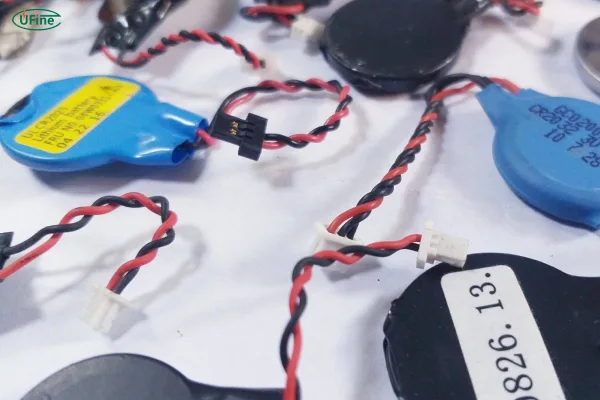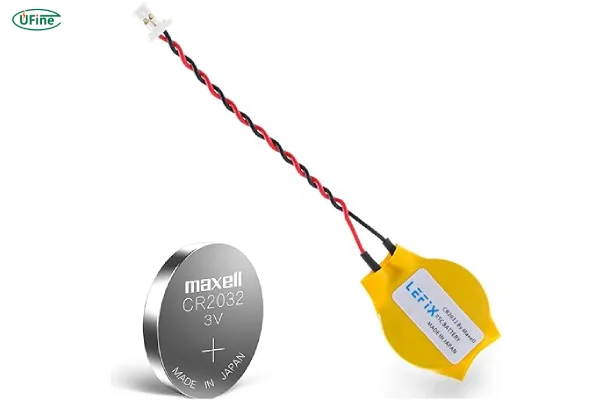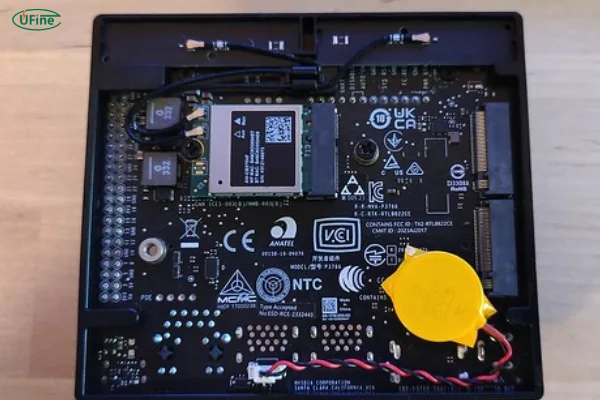
- Part 1. Learn RTC battery
- Part 2. How an RTC battery works
- Part 3. Applications of RTC batteries
- Part 4. Types of RTC batteries
- Part 5. Key specifications to consider
- Part 6. How long does an RTC battery last?
- Part 7. How to replace an RTC battery
- Part 8. RTC battery vs. CMOS battery: are they the same?
- Part 9. Choosing the right RTC battery for your device
- Part 10. Storage and maintenance tips
- Part 11. RTC battery challenges in low-temperature or harsh environments
- Part 12. Conclusion
- Part 13. FAQ
In modern electronics, real-time tracking and time-sensitive operations are fundamental. At the heart of this capability lies a small but crucial component: the RTC battery. Whether you’re dealing with a laptop, embedded system, or industrial controller, an RTC (Real-Time Clock) battery ensures your system keeps track of time—even when the main power is off.
In this article, we explore everything about RTC batteries—from how they work, where they’re used, and how to replace them, to how to choose the right one. Let’s dive in.
Part 1. Learn RTC battery
An RTC battery powers a real-time clock (RTC) module, which keeps track of current time and date when the main system power is unavailable. RTCs are essential in systems that must maintain accurate time information through power outages, reboots, or long downtimes.
Without an RTC battery, your device would reset to a default time every time it loses power—a critical issue for applications like security systems, data logging devices, industrial controllers, and more.
Part 2. How an RTC battery works
An RTC module contains a tiny quartz crystal oscillator and low-power circuitry that runs continuously, drawing only microamps of current. The RTC battery provides just enough power to keep the clock ticking even when the main system is turned off.
Here’s how it works:
- When the device is powered on, the RTC draws power from the main power supply.
- Once the system shuts down or experiences a power cut, the RTC battery kicks in, ensuring uninterrupted timekeeping.
- The battery is often connected directly to the RTC chip or integrated with the device’s motherboard.
This simple mechanism has critical implications—especially in devices where time stamping, scheduling, and logs must remain accurate regardless of power state.
Part 3. Applications of RTC batteries
RTC batteries are found in a wide range of devices across various industries:
Computers and Laptops
In personal computers, the RTC battery is often referred to as the CMOS battery, which maintains the BIOS settings and system time even when the computer is unplugged. Without it, your computer would reset to an incorrect time after every shutdown.
Embedded Systems and IoT Devices
In microcontroller-based systems like Arduino or Raspberry Pi, RTC modules (like DS1307 or DS3231) often rely on coin cell batteries to maintain time when the board loses power.
Medical Devices
Accurate timing is crucial in patient monitoring equipment, infusion pumps, and diagnostic machines. RTC batteries ensure data logging remains precise and reliable.
Industrial Automation
PLC systems, machine controllers, and industrial sensors rely on RTCs for logging operations, fault events, and scheduling tasks—even in harsh and unstable power environments.
Automotive Electronics
Vehicle ECUs use RTCs for time-sensitive operations like logging error codes, managing service intervals, and supporting GPS synchronization.
Part 4. Types of RTC batteries

Choosing the correct RTC battery depends on the device type, environment, and application lifespan. The main types include:
Coin Cell Batteries
These are the most common type, often used in consumer electronics and embedded systems.
- Examples: CR2032, BR2032
- Chemistry: Lithium manganese dioxide (Li-MnO₂)
- Voltage: Usually 3V
- Pros: Small, cost-effective, long shelf life
- Cons: Not rechargeable
Rechargeable RTC Batteries
These are ideal for systems where the RTC gets frequent short-term use or where recharging is possible.
- Examples: ML2032 (manganese lithium), LIR2032 (lithium-ion)
- Voltage: Typically 3V to 3.6V
- Pros: Rechargeable, eco-friendly
- Cons: Lower cycle life compared to primary cells
Supercapacitors
Used as alternatives in some designs.
- Pros: Extremely long cycle life
- Cons: Higher self-discharge rates, sensitive to temperature
Each battery type serves a different niche and has to be selected carefully based on system requirements.
Part 5. Key specifications to consider
When selecting an RTC battery, consider the following parameters:
- Voltage: Commonly 3V or 3.6V; must match the device’s requirement.
- Capacity (mAh): Indicates how long the battery can power the RTC; higher values mean longer life.
- Chemistry: Affects performance, rechargeability, and temperature tolerance.
- Discharge Rate: Must be low to ensure battery longevity.
- Size & Form Factor: Should fit securely in the available housing or battery holder.
- Shelf Life: Coin cells often last 5–10 years depending on use and quality.
Understanding these specifications ensures reliable and long-term RTC performance.
Part 6. How long does an RTC battery last?
The longevity of an RTC battery depends on multiple factors, including usage, temperature, and the type of battery used.
Typical Lifespans
- CR2032 (Non-rechargeable coin cell): 5–10 years
- Rechargeable ML/LIR types: 2–5 years
- Supercapacitors: Up to 10 years (but require periodic charging)
Factors That Affect Life:
- Operating temperature: High temps accelerate degradation.
- Load current: Devices with higher RTC power demands will drain the battery faster.
- Usage environment: Humidity and dust can also impact life.
Signs of battery failure include incorrect date/time, BIOS resets, or loss of configuration settings.
Part 7. How to replace an RTC battery
Step-by-Step Guide for PCs and Laptops:
- Power off and unplug the device.
- Open the case and locate the motherboard.
- Identify the RTC battery (usually a coin cell in a holder).
- Carefully pry it out and replace it with a new one of the same model.
- Power on the device and reconfigure the date/time if needed.
For Embedded Devices:
- Many RTC modules have battery holders. Simply remove and insert the new battery.
- For soldered batteries, desoldering is required, which should be done carefully to avoid damaging PCB traces.
Important Note: Always use ESD precautions and ensure the replacement battery meets the same voltage and chemistry specifications.
Part 8. RTC battery vs. CMOS battery: are they the same?
The terms RTC battery, CMOS battery, and BIOS battery are often used interchangeably, but here’s the distinction:
TermCommon UsePurposeRTC BatteryGeneral/Embedded systemsMaintains clock and timeCMOS BatteryDesktop/laptop computersMaintains BIOS/UEFI settingsBIOS BatteryOlder PCsSame as CMOS battery
In essence, all three serve the same goal—keeping the system time and settings intact when power is lost—but the term used depends on the device and context.
Part 9. Choosing the right RTC battery for your device
When selecting a suitable RTC battery, consider:
- Device requirements: Check voltage, size, and compatibility.
- Battery type: Choose between primary (non-rechargeable) or secondary (rechargeable).
- Environmental conditions: Choose industrial-grade batteries for high or low-temperature environments.
- Supplier reliability: Stick to trusted brands or custom battery manufacturers for critical systems.
Recommended RTC Battery Suppliers
- Panasonic
- Renata
- Maxell
- Ufine Battery (custom solutions for embedded, industrial, and low-temperature applications)
Ufine Battery, for example, specializes in custom lithium battery packs including RTC-compatible models. Their expertise in low-leakage, long-shelf-life, and compact cell design makes them a valuable partner for OEMs and device manufacturers. Contact Ufine Battery for tailored RTC battery solutions.
Part 10. Storage and maintenance tips
To maximize the shelf life and performance of RTC batteries:
Storage Guidelines
- Store in a cool, dry environment (15–25°C optimal).
- Avoid humidity and condensation.
- Do not store near conductive materials.
Maintenance Tips
- Periodically check battery voltage (especially in mission-critical devices).
- Replace batteries before they fully discharge to prevent data loss.
- Dispose of used batteries following environmental regulations.
Proper storage and proactive maintenance can prevent unexpected time resets and system malfunctions.
Part 11. RTC battery challenges in low-temperature or harsh environments
RTC batteries in extreme environments face unique challenges:
Common Issues
- Decreased voltage output at sub-zero temperatures
- Accelerated self-discharge
- Cracking or leakage due to thermal cycling
Solutions
- Use industrial-grade lithium cells rated for -40°C to +85°C.
- Encapsulate the RTC and battery module for insulation.
- Choose rechargeable lithium thionyl chloride batteries or coin cells with high-temperature tolerance.
Ufine Battery offers custom RTC battery solutions for devices that operate in freezing or high-heat conditions. Their experience with temperature-resistant chemistries ensures reliable timekeeping in demanding fields such as aerospace, mining, and outdoor surveillance.
Part 12. Conclusion
The humble RTC battery plays a vital role in maintaining time and configuration across a wide array of electronics. From laptops and embedded systems to industrial controllers, these small power sources ensure reliability and continuity.
Choosing the right RTC battery involves understanding voltage requirements, environmental conditions, battery chemistry, and lifespan. And for those with specialized needs, trusted manufacturers like Ufine Battery offer custom battery packs to meet the most demanding applications.
Whether you’re replacing a CMOS battery in a laptop or designing a time-sensitive embedded device, knowing your options and caring for your RTC battery ensures your systems run reliably—right on time.
Part 13. FAQ
Can I use any coin cell battery for RTC?
No. Always match the voltage and chemistry. Using incompatible batteries can damage the RTC circuit.
What happens if the RTC battery dies?
You may experience date/time resets, BIOS configuration loss, or faulty logs in industrial systems.
Can rechargeable RTC batteries be used in PCs?
Most PC motherboards are not designed to recharge RTC batteries. Always follow manufacturer guidelines.
What’s the difference between CR2032 and BR2032?
Both are 3V lithium coin cells, but BR2032 has better high-temperature performance and stability.
Related Tags:
More Articles

Battery Load Test: A Comprehensive Guide
Step-by-step battery load test guide for car, solar & industrial use. Learn how to load test a battery, interpret voltage charts, and avoid common mistakes.
The Comprehensive Guide to Battery Balancing and Battery Balancer
Discover how battery balancers improve lithium battery performance, lifespan, and safety. Learn types, functions, and tips to choose the right balancer.
What Is the Best Voltage for a Chainsaw Battery?
Compare 12V-80V chainsaw batteries for light pruning, medium firewood, and professional cutting. See best battery chainsaw with runtime charts and safety tips.
Lithium VS. Alkaline Batteries: A Comprehensive Comparison
Lithium batteries last 3–7× longer than alkaline and perform better in cold weather. Compare lifespan, cost, safety, and best uses to choose the right battery.
Comparing Lithium-Sulfur and Lithium-Ion Batteries: Which is Right for You?
Compare lithium-sulfur (Li-S) and lithium-ion batteries on energy, lifespan, cost, safety, and applications. Best choice for drones, EVs, and electronics.




